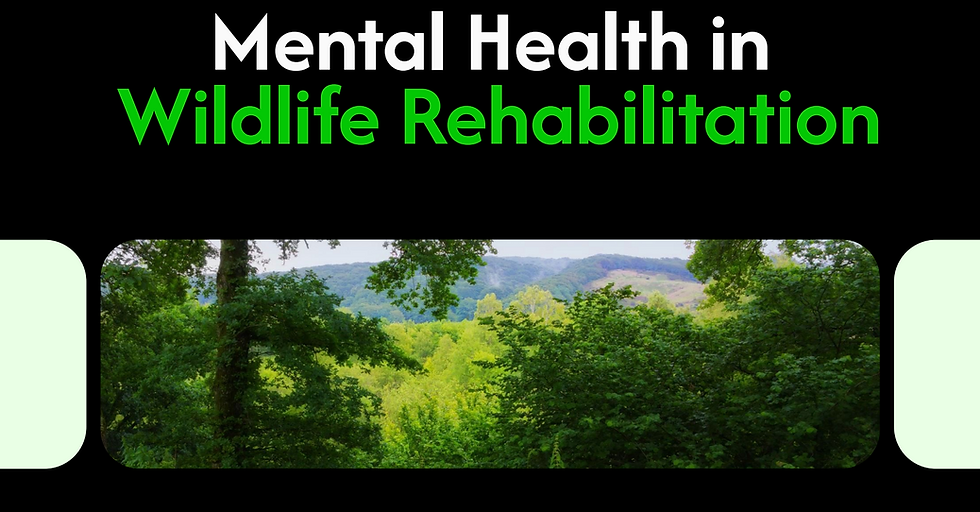The guts of the matter: What rehabilitators need to consider in their patients
- WReNNZ

- Oct 14, 2022
- 3 min read

Gut biome, or, to be more precise, gut microbiome research, has been a rapidly expanding field of research over the past 20 years. This was driven by expanding interest in human health, but we are also seeing more avian-related topics involving this fascinating field. Grond et al., 2018, have captured the extrinsic and intrinsic aspects affecting the gut microbiome of a free-living wild bird (Fig. 1). This is a complex and fragile environment, and as such, wildlife rehabilitators need to consider the support needed at all stages of rehabilitation.
Rehabilitators know these external and internal aspects have influenced the reason the bird was presented for care and their potential outcomes, including, among many others, impact injuries, nestling and dependent young birds, toxic exposure, pet animal interactions, extreme catastrophic natural events, etc. Also, when admitting patients to a rehabilitation facility, there are some 'knowns'. We know there will be dehydration, and there may be nutritional issues, including starvation, inappropriate foods given, and developmental issues, among others. We also know there are exposures to toxins to consider, injuries to manage, physiological shock, pain and stress. All of these aspects can and do significantly impact the gut microbiota.

Along with the standard care and stabilization, we can begin to manage the gut and its invaluable and helpful inhabitants (the 'good guys'); bacteria, protozoa, fungi, yeasts, and viruses, while reducing the impact from deleterious members (the 'bad' guys) of these groups. The first clinical care will include stabilizing the body temperature, rehydration, adding calories as appropriate, and reducing stress, pain and discomfort. From Fig. 1 above, we can immediately see we are managing all those factors, both intrinsic and extrinsic, yet all have a profound effect on the well-being of the body. A part of the process to move your patient towards stability can and should include gut microbiome support. Using bone broths can be a beneficial part of this process and are cheap and easy for the rehabilitator to prepare and give as the first oral fluids (recipes below).
Once the patient can have a diet reflective of its trophic level based on its natural history, the next step is to ensure as broad a diet base as possible to continue supporting a healthy gut microbiome restoration. As noted by Heiman and Greenway (2016), diversity is the key to this, but we also know this from monitoring our own health, our family and pets, and of course, from our patients. A diet for growing humans based on Mcdonald's burgers, while fun (?), is simply not going to support the crucially essential inhabitants of our guts.
The bottom-line and basics for our patients are these - warming or cooling as needed, rehydration (sub-cutaneous or intravenous are the most effective), flushing the gut and feeding the microbiome (bone broths are highly likely to aid in these aspects), excellent veterinary care as needed and the very best professional wildlife rehabilitation we can give to support our avian patients.
The recipe chart gives three ideas for broths that can make a huge difference to the well-being of your patient. As most of us know, the use of broths is not new. In fact, broths have been linked to invalid cooking for hundreds of years. What is new is that we can use these in our avian patients. Bones broths are a part of our practice and must always be used in conjunction with all other management, including moving to a trophic-level and age-appropriate diet. Restoring an efficient avian gut is then reflected in producing healthy, species-appropriate poops! As you know, this is the cause for celebration! A healthy gut microbiome is critical for life!

Resources
Grond, Kirsten, Brett K. Sandercock, Ari Jumpponen, Lydia H. Zeglin. 2018. The avian gut microbiota: community, physiology and function in wild birds. Journal of Avian Biology, Volume: 49, Issue: 11, https://doi.org/10.1111/jav.01788
Heiman, Mark L., Frank L. Greenway. 2016. A healthy gastrointestinal microbiome is dependent on dietary diversity. Molecular Metabolism. Volume 5, Issue 5, Pages 317-320, https://doi.org/10.1016/j.molmet.2016.02.005
Finally, a funny story …

The article was written by Lynn Miller CWR PhD






Comments